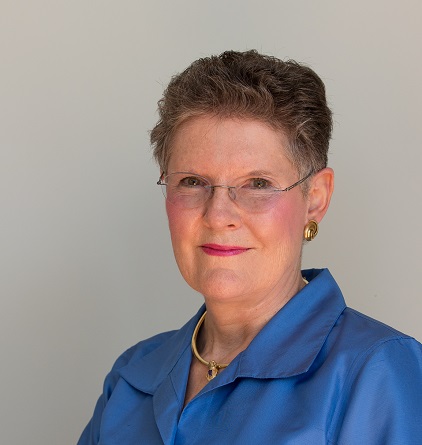Please help me welcome Betty Jean Craige as today’s Wednesday’s guest. She has written a number of books in the Witherston Mystery Series and Dam Witherston, which I reviewed this past Sunday, is the 3rd book in the series. Today she is sharing some of the interesting things she discovered while doing research for her stories.
While you are enjoying her post, help yourself to some coffee and a sweet roll.

And after you finish your snack and the read here, you can hop over to The Blood-Red Pencil blog, where I wrote about how the new book, Reflections of Winnsboro, came about.
 I love doing research. I did once upon a time as a truth-seeking scholar, and I do these days as a fun-seeking teller of tales.
I love doing research. I did once upon a time as a truth-seeking scholar, and I do these days as a fun-seeking teller of tales.
My Witherston Murder Mysteries have all required research—into the Cherokees who occupied north Georgia for a thousand years, the 1828 Georgia Gold Rush, and the subsequent Georgia Land Lotteries; and into present-day pharmaceuticals, DNA ancestry tests, and poultry transportation. I’ve downloaded deeds, wills, maps, and other official documents to modify for my stories. I’ve checked calendars for years past and years future to obtain information about full moons and weather conditions.
In Dam Witherston, Fairfield’s Auction, and Downstream I connected Witherston’s Cherokee/white-settler past with its multicultural present. North Georgia’s past I discovered; Witherston’s past I invented, but in keeping with what I had discovered. I did research to find names for twenty-first-century Cherokees and nineteenth-century white settlers. I did not do research to find names for characters and animals. I didn’t need to do research to think of Sassyass the donkey, Grass and Weed the goats, Barack the black cat, Betty the pig, Henny Penny, Mother Hen, Moonshine, Sunshine, Feather Jean and Feather Jo, the liberated chickens, and, of course, Doolittle the African Grey Parrot, whom I modeled on Cosmo, my fifteen-year-old African Grey.

Research expands our understanding of the world. Writing stretches our capacity for empathy. We writers must imagine how individuals very different from ourselves feel, how they arrive at the decisions they make, what they fear and what they hope. And we writers come to realize that what we write determines what we think, as much as what we think determines what we write. So I write about what I want to learn about. And my research gives me ideas for my plot.
In my fourth novel, a suspense-thriller titled Aldo to be published in 2018, I had to imagine myself as a schizophrenic, accidental killer who discards his old identity and adopts a new one when he leaves the United States to travel across Canada to the township of Pickle Lake. I studied road maps of Canada, visited websites with instructions on changing one’s identity, used Mapquest to determine how far my perp could travel in a wintry day, and looked up real estate prices in the township of Pickle Lake. I figured out how to launder money. I figured out how to live off the grid and to hide in plain sight.
By the way, I’ve been writing this blog while whistling a duet with Cosmo: “She’ll be coming round the mountain when she comes….” I bought Cosmo as a six-month-old chick in 2002 because I wanted to learn how parrots think. I had always been curious about cognition in non-human animals, and a parrot seemed easier to raise than a gorilla or a dolphin.
I learned that Cosmo thinks a lot like me. She talks with me in my voice and tells jokes to make me laugh. She whistles not only tunes she has heard me whistle but also entirely new medleys, after which she says, “Wow, what a whistle.”
I don’t know whether Cosmo thinks like me because she lives with me, or she thinks like me because she too has consciousness.* Anyway, my research into parrots transformed my life. I wrote about Cosmo’s acquisition of language and humor in my 2010 book Conversations with Cosmo: At Home with an African Grey Parrot.
* See the 2012 Cambridge Declaration on Consciousness: “… the weight of evidence indicates that humans are not unique in possessing the neurological substrates that generate consciousness.”
ABOUT THE AUTHOR – Dr. Betty Jean Craige has published books in the fields of Spanish poetry, modern literature, history of ideas, politics, ecology, and art. She is a scholar, a translator, a teacher, and a novelist. You can find out more about her on her website
Dam Witherston is Betty Jean Craige’s third Witherston murder mystery published by Black Opal Books. Downstream and Fairfield’s Auction appeared in 2014 and 2016, respectively.

Very interesting! Love the bird!
Thanks, PJ. I wanted to get a picture of Betty’s bird, but there were none to snag on her website, so I just found an image of a gray parrot. They are fascinating birds and so smart.
Research is so fascinating and fun. It’s amazing what one turns up in the course of pursuing something entirely different.
You are right about how much fun research can be. Sometimes I spend more hours than I should just because one thing leads to another, especially on the Internet. My gosh, what did we do before that? 🙂